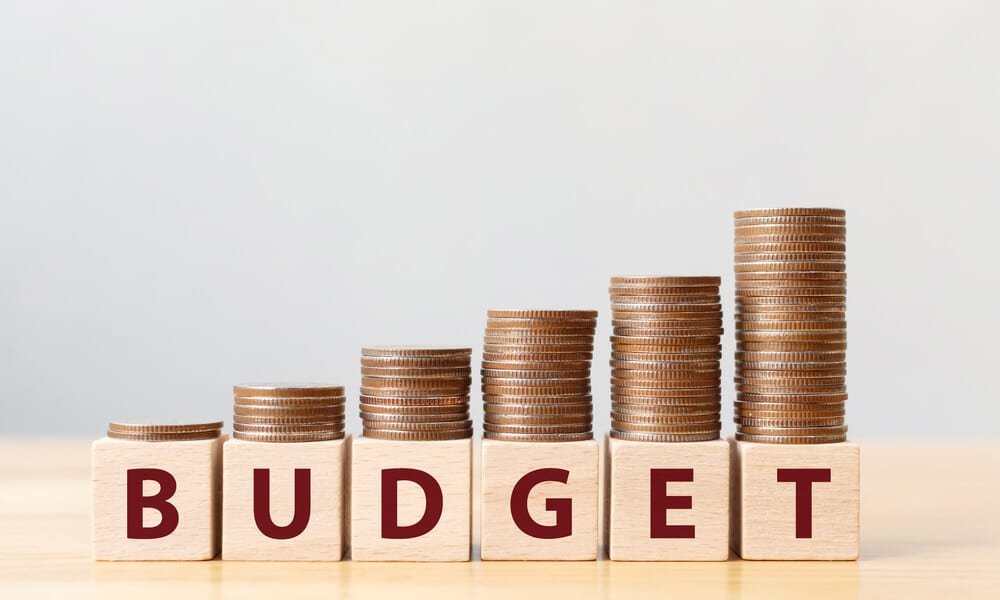By: Dipak Kurmi
In a recent projection, the International Monetary Fund (IMF) anticipates that India’s combined government debt, encompassing both central and state debts, will surpass 100% of the Gross Domestic Product (GDP) by the fiscal year 2027-28. The Ministry of Finance (MoF) responded to this forecast by emphasizing that it does not align with the ‘baseline scenario,’ indicating normal economic conditions. The MoF clarified that the IMF’s reference is to a ‘worst-case scenario,’ assuming a global shock that would impact all nations uniformly.
Is the government’s debt sustainable?
The government’s debt is intricately tied to its management of overall spending in relation to its total receipts, known as the fiscal deficit (FD), representing the surplus of expenditures over receipts. These financial transactions can be broadly categorized into two types: revenue and capital.
Revenue expenditure (RE) primarily constitutes consumption-related spending without the generation of assets. This encompasses costs associated with the regular operation of government departments and services, interest payments on government debt, subsidies, and similar outlays. On the other hand, capital expenditure (CE) refers to funds allocated by the government for the acquisition of long-term assets like property, plant, and equipment.
Revenue Receipts (RR) denote income received by the government without incurring any liability or diminishing its assets. This category encompasses tax and non-tax receipts, duties and fines, as well as interest and dividends earned from government investments and assets. On the other hand, Capital Receipts (CR) represents income sources that either generate liabilities or diminish the government’s asset value. This includes loans procured by the government to meet long-term developmental requirements.
In an ideal scenario, Revenue Receipts (RR) should ideally cover all Revenue Expenditure (RE), leading to a Revenue Deficit (RD) of zero, which is the disparity between RR and RE. The government is advised to resort to borrowings exclusively for the purpose of generating long-term assets. This strategic spending approach facilitates the creation of income streams, which, in turn, can be utilized to service loans, ensuring the sustainability of such debt.
In practice, Revenue Receipts (RR) consistently lagged behind Revenue Expenditure (RE), resulting in a persistent revenue deficit. This situation forced the government to borrow primarily for funding consumption-related spending. Furthermore, the loans obtained for Capital Expenditure (CE) did not yield productive outcomes, leading to an unsustainable escalation of debt levels. This trend was evident even in the fiscal year 2003-04 when the Fiscal Responsibility and Budget Management (FRBM) Act (2003) was enacted under the leadership of the then Vajpayee-led NDA government. During that period, interest payments accounted for one-third of the total Revenue Expenditure.
According to the Fiscal Responsibility and Budget Management (FRBM) Act of 2003, the Vajpayee government pledged to eradicate the Revenue Deficit (RD) by the year 2008. Additionally, they committed to reducing the Fiscal Deficit (FD) to 3 percent of the Gross Domestic Product (GDP). However, these commitments faced challenges, as evidenced in the fiscal year 2008-09, where the Revenue Deficit stood at 4.7 percent, and the Fiscal Deficit was recorded at 6.2 percent.
During the budget speech for the fiscal year 2016–17, the then Finance Minister, Arun Jaitley, revealed the Modi government’s intention to reassess the Fiscal Responsibility and Budget Management (FRBM) Act of 2003. The objective was to introduce greater flexibility in the Fiscal Deficit (FD) target. To facilitate this review, a committee led by Dr. N K Singh was established. The committee proposed a “glide path” to guide fiscal policies over the subsequent six years, spanning from 2017–18 to 2022–23.
The committee, chaired by Dr. N K Singh, proposed specific fiscal targets for consideration. These recommendations included aiming for a Fiscal Deficit (FD) target of 2.5 percent, a Revenue Deficit (RD) of 0.8 percent, and setting a combined debt ceiling for both the Centre and states at 60 percent. Additionally, it suggested a central debt ceiling of 40 percent for the terminal year, i.e., 2022–23. Moreover, the committee outlined the objective of achieving a 3 percent FD during the fiscal year 2018–19. Notably, it granted the Union Government flexibility to exceed the target by up to 0.5 percent in the case of “far-reaching structural reforms with unanticipated fiscal implications.”
The amendment to the Fiscal Responsibility and Budget Management (FRBM) Act within the Finance Bill 2018–19 showcased the government’s strategic adjustments. Despite preserving the “escape clause” to accommodate unforeseen events, the government opted for a revised glide path, aiming to achieve a 3 percent Fiscal Deficit (FD) by 2020–21 instead of the committee’s initial suggestion for 2018–19. Additionally, the amendment extended the timeline for reaching the debt limit of 40 percent for the Centre, shifting the deadline to 2024–25 from the initially mandated 2022–23.
The deviation from the glide path can be understood in the context of the government falling short of the Fiscal Deficit (FD) target for the fiscal year 2017–18 by 0.3 percent. Additionally, there was a lack of optimism about attaining the 3 percent FD goal during 2018–19, as initially suggested by the committee.
Within the budgetary framework for the fiscal year 2020-21, Finance Minister Nirmala Sitharaman exercised the escape clause embedded in the Fiscal Responsibility and Budget Management (FRBM) (Amendment) Act. This move resulted in the adjustment of Fiscal Deficit (FD) targets: for the fiscal year 2019-20, the target shifted from the initially proposed 3.3 percent to 3.8 percent in the revised estimate, and for 2020-21, it moved from the prescribed 3 percent, as per the mandated glide path, to 3.5 percent.
When evaluated against the benchmarks established by the N K Singh Committee and the Fiscal Responsibility and Budget Management (FRBM) (Amendment) Act, the government’s performance has been below expectations. A notable instance is the fiscal year 2018–19, where the Fiscal Deficit (FD) stood at 3.7 percent, exceeding the 3 percent target set by the Singh Committee. Considering deferred subsidy payments (DSPs) in those years, encompassing substantial amounts for key subsidy bills like food, fertilizers, and fuel, the FD would surge to 5.7%. Similarly, for the fiscal year 2019-20, factoring in DSPs would result in an FD of 5.1 percent.
The fiscal year 2020–21 witnessed a significant downturn in revenue and a substantial increase in expenditure due to the impact of the COVID-19 pandemic. Consequently, the Fiscal Deficit (FD) soared to 9.1 percent, surpassing the Budget Estimate (BE) of 3.5 percent. Given the exceptional circumstances of the year, a comparison with the usual glide path may not be entirely appropriate.
In the subsequent year, as the impact of the pandemic diminished and the economy rebounded, Finance Minister Sitharaman, in her budget speech for 2021-22, established a Fiscal Deficit (FD) target of 6.9 percent. She articulated her objective of achieving a 4.5 percent FD by the year 2025-26. The actual FD for 2021-22 turned out to be slightly lower, standing at 6.7 percent. Moving forward to 2022-23, she aimed for a 6.4 percent FD, characterizing it as a stride towards fiscal consolidation, and the actual FD precisely matched this target. For the fiscal year 2023-24, the set target remains at 5.9 percent, with a likelihood of attainment.
Based on the information presented, the finance ministry expresses assurance that the central government is “on course to attain its declared fiscal consolidation goal” of lowering the Fiscal Deficit (FD) to 4.5 percent by 2025-26. However, this assertion may be considered misleading. Altering the fiscal trajectory significantly and then asserting that fiscal figures are progressing as planned appears somewhat amusing. It is essential to remember that, in accordance with the Fiscal Responsibility and Budget Management (FRBM) (Amendment) Act, the central government was expected to achieve a 3 percent FD in 2020-21.
In contrast, the realized Fiscal Deficit (FD) for the years 2021-22 and 2022–23 exceeded twice the anticipated values, and the projection for the ongoing year suggests it might be nearly double this level. The Revenue Deficit (RD) stood at 4.1 percent in 2022–23 and is expected to be around 3 percent in 2023-24, which is 4 to 5 times higher than the recommended 0.8 percent by the NK Singh Committee. Additionally, the Debt-to-GDP ratio for the Centre is approximately 60 percent, surpassing the 40 percent threshold mandated by the amended Act.
In accordance with the Fiscal Responsibility and Budget Management (FRBM) Act of 2003, the Fiscal Deficit (FD) was expected to decline to 3 percent by 2008. However, the current discussion revolves around a figure of 4.5 percent by 2025-26, indicating a significant deviation from the initial target. The Act also aimed for a Revenue Deficit (RD) of ‘Zero’ by 2008, yet in 2023-24, it stands at 3 percent, underscoring the considerable lag in the Centre’s fiscal management. It is evident that, without Prime Minister Modi’s initiatives to enhance tax revenue, the situation could have been even more challenging. Nevertheless, substantial efforts are still required, particularly in reducing Revenue Expenditure (RE). (The writer can be reached at dipaknewslive@gmail.com)







